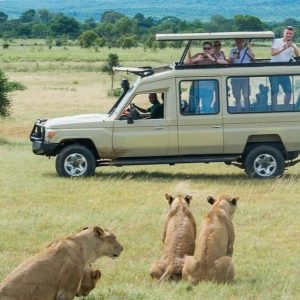Mount Kilimanjaro: A Trekking Adventure on Africa’s Highest Peak
Introduction to Mount Kilimanjaro
Mount Kilimanjaro stands as Africa’s highest peak, reaching 5,895 meters (19,341 feet). Located in northeastern Tanzania, this majestic mountain is a prominent landmark and a sought-after destination for trekkers. Unlike many of the world’s high peaks, Kilimanjaro is a free-standing mountain, which means climbers don’t need technical climbing skills, making it accessible to a broad range of adventurers.
Routes to the Summit
Several routes offer different experiences for those aiming to reach the summit:
- Marangu Route: Known as the “Coca-Cola Route,” this is the most popular and considered the easiest. It features hut accommodations and is suitable for those who prefer a less rustic experience. However, it has a shorter acclimatization period, which can impact the success rate of reaching the summit.
- Machame Route: The “Whiskey Route” offers more challenging terrain but rewards climbers with diverse and spectacular scenery. This route provides ample acclimatization time and passes through various ecosystems, including rainforest, moorland, and alpine desert.
- Lemosho Route: Renowned for its scenic beauty and remoteness, the Lemosho Route is ideal for those seeking a less crowded path. It offers a gradual ascent and takes climbers through diverse landscapes, providing excellent acclimatization opportunities.
- Rongai Route: Approaching from the north, this route is less frequented and provides a gentler ascent. It offers a unique perspective of Kilimanjaro and is suitable for those looking to avoid the more crowded routes.
Climatic Zones of Kilimanjaro
Mount Kilimanjaro’s climb takes you through five distinct climatic zones:
- Rainforest: The lower slopes are covered in lush, tropical rainforest, where you may encounter colobus monkeys and vibrant plant life.
- Heath and Moorland: Higher up, you’ll pass through heath and moorland, characterized by giant heathers and lobelias.
- Alpine Desert: As you continue, the landscape becomes barren and rocky, with minimal vegetation and harsh conditions.
- Arctic Zone: At the summit, the environment is frigid, with glaciers and ice fields providing a stark contrast to the lower regions.
Preparing for the Climb
Climbing Kilimanjaro requires physical preparation, as altitude sickness is a significant challenge. Endurance training is essential, and climbers should consider taking additional days for acclimatization. The support of porters, guides, and cooks is crucial for a successful climb, and many trekkers choose to show their appreciation through tipping.
Conservation Efforts
Kilimanjaro is part of the Kilimanjaro National Park, a UNESCO World Heritage Site. The park faces challenges such as glacier retreat due to climate change. Conservation efforts aim to protect the mountain’s ecosystems, and trekkers are encouraged to practice responsible tourism to minimize their environmental impact.
Conclusion
Mount Kilimanjaro offers a rewarding adventure, blending physical challenge with stunning natural beauty. Climbing Africa’s highest peak provides a unique opportunity to experience diverse landscapes and achieve a significant personal milestone. Whether you choose the Marangu, Machame, Lemosho, or Rongai Route, Kilimanjaro promises an unforgettable experience.




